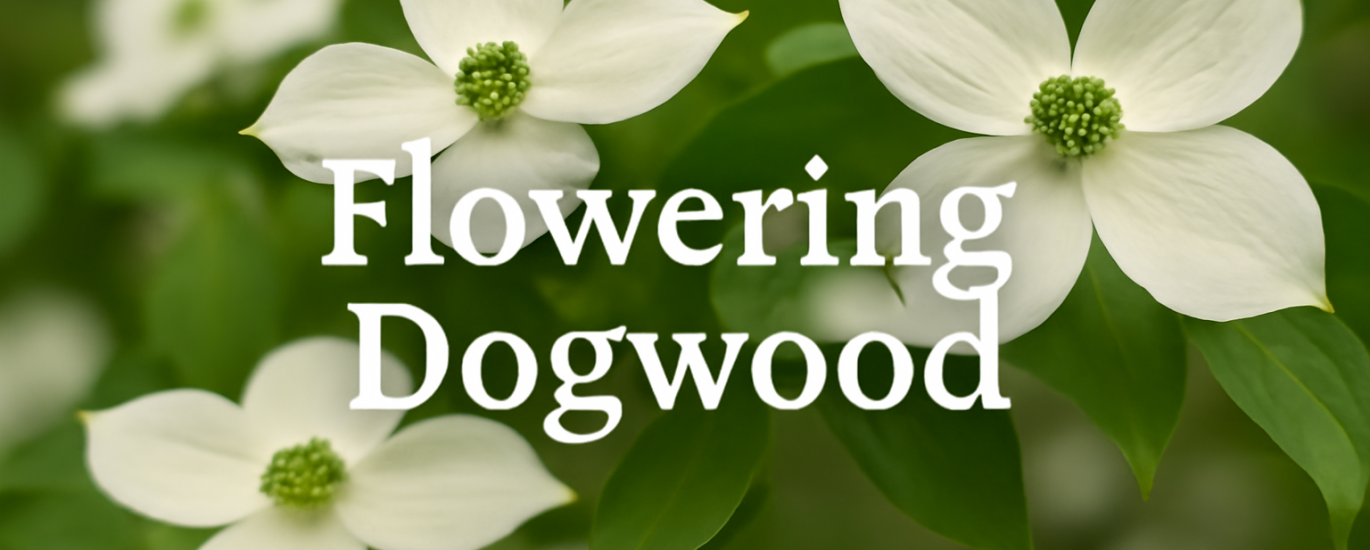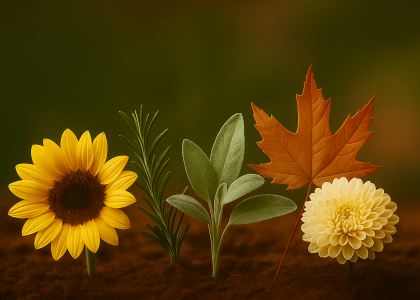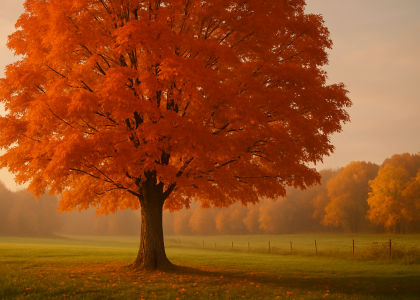The Flowering Dogwood (Cornus florida) is one of the most beloved ornamental trees in North America. Known for its striking spring blossoms and stunning fall foliage, Flowering Dogwood is a must-have for any garden looking to add seasonal interest, vibrant color, and beauty. Whether you're looking to plant a specimen tree, add structure to a mixed border, or create a small-scale flowering tree in your landscape, Flowering Dogwood provides year-round visual appeal. In this guide, we will cover all the essential information for planting, caring for, and propagating Flowering Dogwood, along with expert tips to help this tree thrive in your garden.
What is Flowering Dogwood?
Flowering Dogwood (Cornus florida) is a small deciduous tree that blooms profusely in spring. The tree is known for its showy bracts (often mistaken for petals) that come in shades of white, pink, or red, depending on the variety. As the flowers fade, it produces clusters of red berries, attracting birds. In fall, the leaves turn vibrant shades of red and purple, creating a striking display of color. Its compact size and multi-seasonal interest make it an excellent choice for gardens and urban landscapes alike.
Key Features of Flowering Dogwood:
- Flower Color: White, Pink, Red (depending on variety)
- Foliage Color: Green in spring and summer, turning red or purple in fall
- Height: 15 to 30 feet
- Width: 15 to 25 feet
- Blooming Season: Early Spring
- Hardiness Zones: 5-9
- Special Features: Attracts pollinators, deer-resistant, vibrant fall color

Where to Plant Flowering Dogwood
Flowering Dogwood thrives in part shade to full sun conditions, with best results in a spot that provides morning sunlight and afternoon shade. It prefers moist, well-draining soil but is adaptable to a variety of soil types, including clay and loam.
Ideal Planting Locations:
- Mixed Shrub Borders: Flowering Dogwood can be planted in mixed borders alongside other flowering shrubs or perennials, adding height and interest to the landscape.
- Specimen Tree: Due to its beautiful flowers and compact size, Flowering Dogwood makes an excellent focal point in a garden, whether placed at the center of a lawn or in a corner of the yard.
- Understory Planting: Flowering Dogwood is naturally an understory tree in forests, meaning it can tolerate some shade. Plant it near larger trees that will provide some relief from the midday sun.
Expert Tip: In colder regions (Zones 5-6), it’s best to plant Flowering Dogwood on the south or east-facing side of the house to protect it from harsh winds and late frosts.
How to Plant Flowering Dogwood
Planting Flowering Dogwood properly ensures a healthy start and years of enjoyment. Follow these steps to get the best results:
- Best Time to Plant: Plant in early spring or early fall, avoiding summer's heat and winter's chill.
- Planting Hole: Dig a hole twice as wide as the root ball and the same depth. The top of the root ball should be slightly above the surrounding soil level.
- Soil: Flowering Dogwood prefers moist, well-drained soil. Ensure the site has good drainage, as the tree does not thrive in boggy conditions.
- Mulching: Apply a 2-inch layer of mulch around the root zone to retain moisture, control weeds, and regulate soil temperature.
Expert Tip: Water the tree regularly during its first growing season to establish strong roots. Once established, Flowering Dogwood is moderately drought-tolerant.
Flowering Dogwood Care: Keeping Your Tree Thriving
Flowering Dogwood is relatively easy to care for, but following these key maintenance tips will ensure it flourishes:
Light Requirements:
Flowering Dogwood thrives in part sun to full sun. In sunnier spots, it produces more flowers, but in hotter climates, partial shade helps the tree thrive without stress.
Watering:
Flowering Dogwood prefers regular moisture, especially in the first few years after planting. Aim for about 1 inch of water per week, particularly during dry spells. Be cautious of overwatering, as soggy roots can cause disease.
Expert Tip: Deep watering encourages deep root growth, helping the tree establish itself more successfully in your garden.
Soil:
This tree grows best in moist, well-draining soil with a slightly acidic to neutral pH. While it can tolerate clay, it should not be planted in poorly-drained, heavy soils that hold moisture for long periods.
Pruning:
Prune Flowering Dogwood in late winter or early spring while it is still dormant. Remove dead or diseased branches, and thin out crowded areas to improve air circulation. This will help prevent fungal diseases and improve flower production.
Expert Tip: Prune sparingly to avoid cutting away flower buds. Only remove limbs that are dead, damaged, or crossing.
Advanced Care Tips for Flowering Dogwood
Winter Protection:
In areas prone to harsh winters, Flowering Dogwood may suffer from winter burn or damage due to extreme cold. Wrap the trunk with burlap or a tree wrap during the coldest months to protect it from sunscald and cold winds.
Expert Tip: If your Dogwood loses leaves or flowers due to winter damage, don’t worry. It will likely recover with new growth in the spring.
Fertilizing:
Flowering Dogwood doesn’t require heavy fertilizing, but a slow-release fertilizer applied in early spring can promote healthy growth. Avoid fertilizing late in the season, as this may encourage new growth that is too tender to survive winter.
Expert Tip: Use a balanced, organic fertilizer to provide all the necessary nutrients without overfeeding.
Propagation: How to Grow New Flowering Dogwood Trees
Flowering Dogwood can be propagated by softwood cuttings in early summer. Here's how you can do it:
- Take Cuttings: Cut 6-inch lengths of young, non-flowering stems. Remove the lower leaves, leaving two or three leaves at the top.
- Prepare the Cuttings: Dip the cut end in rooting hormone, then plant the cutting in a pot filled with well-draining soil.
- Rooting: Place the pot in a shaded location and keep the soil moist. In about 2 months, the cutting will develop roots and can be transplanted into the garden.
Expert Tip: To increase your chances of success, cover the pot with a plastic bag or a humidity dome to maintain moisture during the rooting process.
Types of Flowering Dogwood
Flowering Dogwood comes in several varieties, each with unique features:
- ‘Cherokee Princess’: A popular variety with large white flowers and a uniform, upright growth habit. Grows 20–30 feet tall. Zones 5–9.
- ‘Cherokee Chief’: A striking cultivar with rich reddish-pink bracts and red-purple fall foliage. Particularly valued for its bold color. Zones 5–9.
- ‘Brandywine’: Bears white spring flowers, followed by vibrant red berries and brilliant burgundy fall color. A standout in autumn gardens. Grows 15–25 feet tall. Zones 5–8.
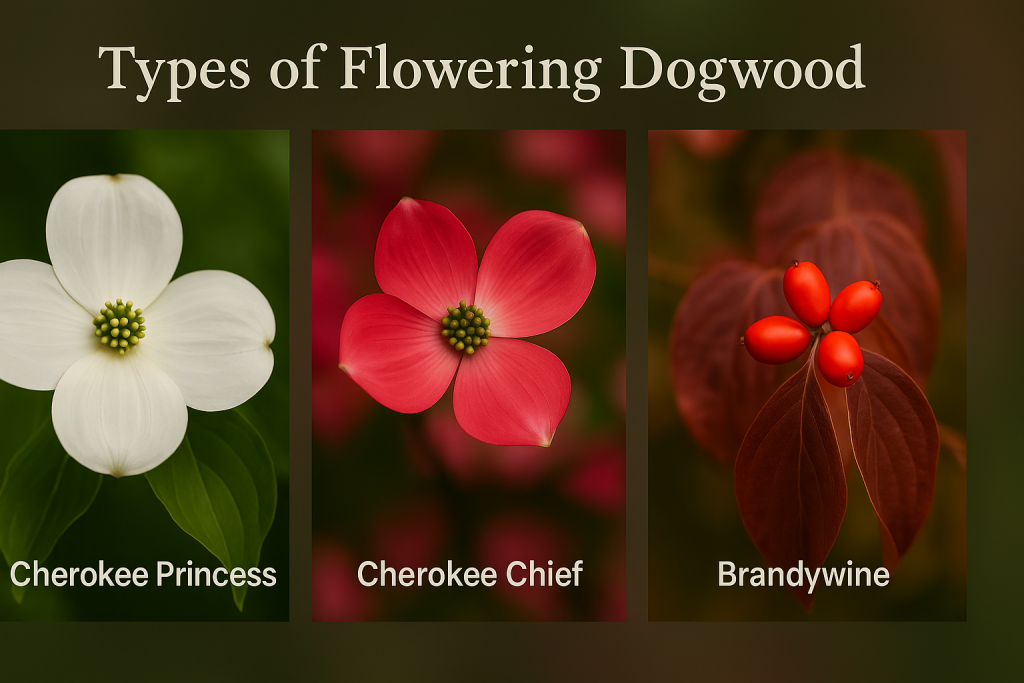
Companion Plants for Flowering Dogwood
Pair Flowering Dogwood with other plants to create a harmonious garden:
- Azaleas: Their bright spring blooms complement the Dogwood’s showy flowers.
- Hostas: Grow well in the shade under a Dogwood tree, providing attractive ground cover.
- Ferns: The soft, feathery texture of ferns contrasts beautifully with the Dogwood's foliage.
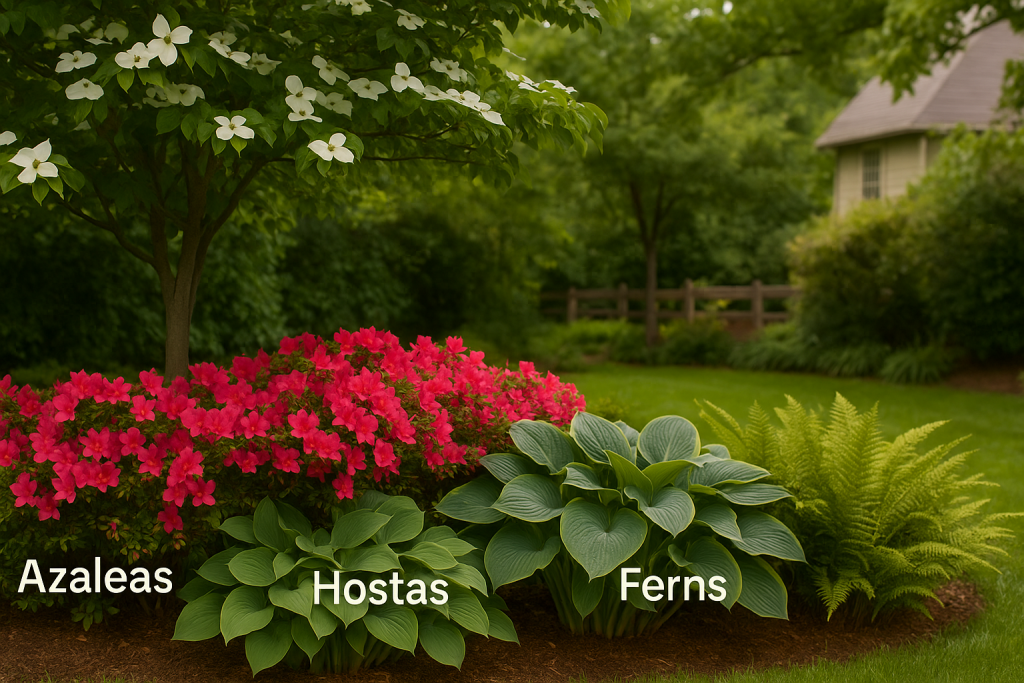
FAQ: Common Flowering Dogwood Questions
Why isn’t my Flowering Dogwood blooming?
Ensure your tree is receiving enough sunlight. If it’s in deep shade, it may not bloom well. Also, avoid pruning in the spring, as it may remove developing buds.
How do I protect my Flowering Dogwood from winter damage?
Wrap the trunk with burlap or use a tree wrap to protect it from sunscald and cold winds during the winter.
Enjoy Flowering Dogwood in Your Garden
Flowering Dogwood is an exceptional ornamental tree that brings beauty, fragrance, and seasonal interest to your garden. With its stunning flowers in spring, vibrant fall colors, and manageable care requirements, it’s an excellent choice for a variety of garden settings. By following the tips and tricks shared in this guide, you can enjoy a thriving Flowering Dogwood that will grace your garden for years to come.

